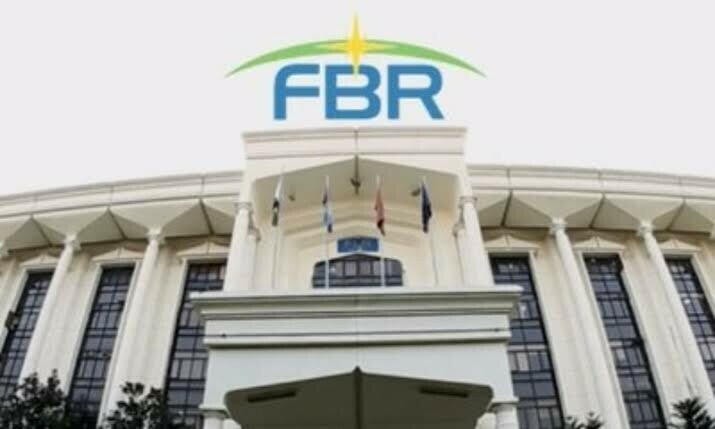• Planning Commission urges review of expenditure amid austerity measures
• FBR defends procurement of 179 vehicles, says it’s essential to operational needs across terrains
ISLAMABAD: The Planning Commission has raised concerns over the procurement of 179 vehicles, including 15 fully bulletproof units, under the Federal Board of Revenue’s (FBR) Rs41 billion Revenue Raises Project, urging a review of the Rs2.237bn expenditure in light of the Finance Division’s austerity measures.
Funded by a $150 million World Bank loan at an annual interest rate of 2.5 per cent over 30 years, the project is a cornerstone of the Prime Minister’s FBR transformation plan. Despite its strong economic indicators — boasting benefit-cost ratios of 42 to 70 and an internal rate of return (IRR) of 130pc to 195pc — the Planning Commission flagged lax scrutiny in its implementation, particularly regarding vehicle procurement.
“An amount of Rs2,237.5m has been proposed for procurement of 179 vehicles of different makes at a unit cost of Rs12.5m for Digital Enforcement Units without provision of specifications of vehicles,” the Planning Commission pointed out and demanded its rationalisation “in light of austerity measures of Finance Division”.
The FBR, however, defended the procurement, claiming it was essential to operational needs across varied terrains, where the digital enforcement stations would be established.
“The proposed vehicles represent the minimum essential specifications necessary for effective field operations, with no inclusion of luxury features. The selection strictly adheres to functional utility for anti-smuggling activities,” the revenue authority said. The project is expected to be completed in June 2027.
The estimated cost savings from the project’s investments in information communication technology (ICT) hardware, taking into account the project’s investment in the new equipment and the associated operational and maintenance costs, would have been estimated at $100m in nominal terms.
This investment in FBR’s data centre and network equipment has been described as unavoidable in averting the failure of the organisation’s ICT systems. “If the FBR does not invest in these upgrades soon, it will incur costs of around $200m to rebuild the data centres,” the FBR advocated.
The Planning Commission noted that the end-of-period target for time spent on customs clearance at the border is set at 48.5 hours against the baseline of 97.5 hours. It said the project’s benefit-cost ratio ranges from 42 to 70, and the internal rate of return from 130pc to 195pc.
The programme, originally envisaged in 2017, aims to achieve a 17pc tax-to-GDP ratio, which still struggles at about 10pc — well below the Asia-Pacific average of 19.3pc.
The change in the base year of national accounts will further reduce Pakistan’s tax-to-GDP ratio. Some studies observed that 64pc of economic activities are undocumented, leading to a loss of billions of rupees in tax collection, the Planning Commission observed, adding that the country’s tax system was overregulated, with the large number of taxes stifling businesses.
“The cost of documentation of tax compliance even for a small business is around Rs250,000,” the Planning Commission said and noted that cash circulation in Pakistan was 28pc compared to 18pc in India and 17pc in Bangladesh.
The Planning Commission called for reforms aimed at simplifying tax procedures, reducing the number of levies, and accelerating the digitisation of the tax system to integrate it with broader economic activity.
The project also envisages mobile tax facilitation services, initiatives for improved taxpayer compliance, establishing a forum for technical consultations with provincial tax authorities on tax harmonisation, staff capacity-building, backup power equipment upgradation, and control rooms and monitoring systems.
The FBR has recently adopted Strategic Plans for the Inland Revenue Service (IRS) and Pakistan Customs. Key components of the transformation plan include value chains’ digital transformation, introduction of tracking technology, implementation support for digital transformation, and value chain implementation support.
In addition, 37 digital enforcement stations will be equipped with hard and soft interventions to counter smuggling.
Out of these 37 stations, 24 will be established on the Indus and Hub rivers and surrounding areas to work as a protective wall, supported by three mobile enforcement units. Additionally, 10 stations will be set up at strategically located checkpoints in Balochistan.
The Customs Tracking System will be integrated with existing databases, which would be important in identifying and targeting people or vehicles involved in transporting smuggled goods on which duties and taxes have not been paid.
The FBR expects its reform efforts to generate an additional $81bn by the end of fiscal year 2028-29. The project also covers replacement of end-of-life ICT equipment, cloud infrastructure, updated software licences, data warehousing, business intelligence tools, and complete LAN and VoIP connectivity for field offices.
As part of the Rs2.237bn allocation, the FBR will also procure 350 bulletproof jackets and helmets for operational personnel.
The tax authority defended its expanded resource needs by pointing to a fourfold increase in the number of tax filers, from 1.5m in 2017 to over 6m by the end of June 2024. It also cited the growing volume of third-party data being gathered to broaden the tax base and identify defaulters.
Published in Dawn, May 19th, 2025


